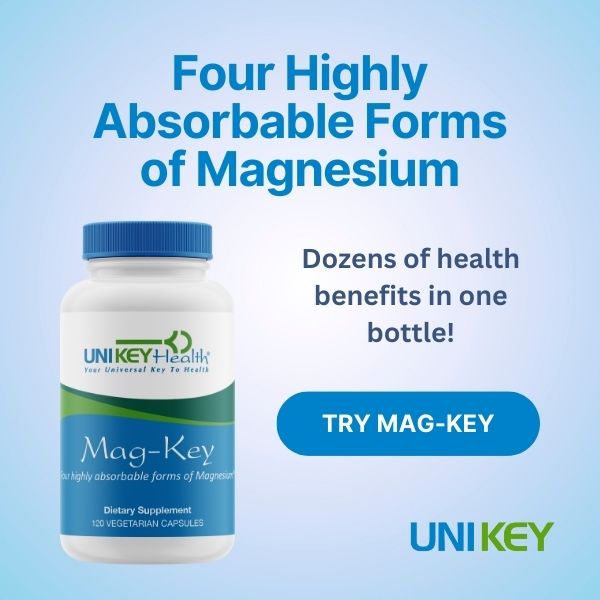 For beautiful, kissable lips, use natural products, detox, and take your daily multi.
For beautiful, kissable lips, use natural products, detox, and take your daily multi.
Is there anyone who doesn’t have chapped lips this time of year? Or even worse—dry, cracked lips that hurt and bleed!
The trouble is, what you put on your lips—even simple lip balm—may not help. All too many ingredients in lip products are actually hazardous to your health.
A high-tech (laser-induced spectroscopy) analysis recently applied to four different lipstick brands showed levels of cadmium and lead—toxic heavy metals—that were much higher than permissible safe limits for human health. Not only can these toxins in lipstick cause carcinogenic dermatitis, but they’ve also been linked to kidney damage, nervous system disruption, and systemic lupus erthematosus.
The FDA recently identified lead in all 20 red lipsticks it tested from 10 different brands—at levels 10 times higher than the safe limit set for lead in candy. Unfortunately, the FDA doesn’t regulate cosmetics—nor did it make the list of tested lipsticks public.
Dr. Ann Louise’s Take:
Hello, is anybody in the government paying attention to cosmetic safety? The Campaign for Safe Cosmetics—not a government agency—says no safe blood lead level has been identified, based on a statement by the Centers for Disease Control and Prevention.
Mark Mitchell, MD, MPH, president of the Connecticut Coalition for Environmental Justice, agrees: “Lead builds up in the body over time, and lead-containing lipstick applied several times a day, every day can add up to significant exposure levels.”
The FDA says its 2009 study was designed to test analytical methods, rather than determine unsafe levels of lead in lipsticks! And the only statement it would make was that lead levels were within “the range the agency would expect to find in lipsticks formulated with permitted color additives and other ingredients prepared under good manufacturing practices (GMP) conditions.”
Since the government’s not watching out for you, check out lip products at the Environmental Working Group’s Skin Deep website: www.cosmeticsdatabase.com. If your favorite lip product is not on its list, call or email the companies that make your favorite and ask if they contain lead, cadmium, and other harmful ingredients.
Why Are Lipsticks So Dangerous?
Heavy metals are only some of the toxins in lip products. Always read labels carefully—even on natural lipsticks and lip balms. Here’s just some of what you want to avoid:
• artificial fragrances (potential allergens) and flavorings, which encourage you to lick your lips (the main cause of chapping)
• benzophenones (allergens and hormone disrupters)
• microcrystalline and synthetic waxes (often petroleum-based)
• parabens (linked to some female cancers)
• phthalic anhydride (made from the active ingredient in moth balls, which can lead to confusion, diarrhea, nausea, and vomiting)
• polyisobutane (an allergen).
You can’t even trust lip gloss made for kids. These products often contain coal tars, which cause cancers in animals, and are a frequent source of allergic reactions—including hives and rashes. BTW, skin allergies are one of the main reasons that people develop dry, cracked lips in the first place.
One of the reasons that lip products are so easily ingested is that they are largely liquid based—so that they’ll spread color on your mouth evenly and smoothly. But this means they’re all too easily eaten along with foods or licked off.
“Their extraction from the human body takes over 40 years,” report researchers in the Journal of Hazardous Materials. That’s one reason I recommend periodic detox throughout the year in Fat Flush for Life, as well as classic Fat Flush.
Tips for Beautiful Lips
Instead of dubious products, rub any vegetable oil that’s good enough to cook with (almond, avocado, olive, macadamia nut, or walnut oil) on your lips. Look for natural products that contain aloe, beeswax, cocoa or shea butter, lecithin, and vitamin E.
Essential oils—like chamomile, grapefruit, lemon, lime, peppermint, rose, and tea tree—can be healing in natural lip products. Just make sure they’re natural oils—not synthetic.
Sunscreen is important, too, even in winter. Apply lip balm with at least SPF 15 frequently, especially before heading out in cold, dry weather.
Drink plenty of water. Dehydration is a frequent cause of dry, chapped lips. And use a humidifier in your home if it’s dry. Check your meds, as well. Certain drugs (like acne medications) can lead to chapped lips.
Exfoliate chapped lips before they crack and bleed. Brush gently with a clean toothbrush to remove any dead skin, and rub your lips with oil, rose water and glycerin, or a natural lip moisturizer.
Then look closely at the color of your lips. If they’re pale, that may be a sign of anemia. In that case, you need more iron and vitamin B12 in your diet or daily multi. Dark red lips, on the other hand, suggest that the capillaries are expanded, suggesting high blood pressure, or may signal that your body is working to fight infection or inflammation.
Vitamins A, B-complex, C, and E are all important for healthy lips—naturally pink—without vertical lines, chapping, cracks, or peeling. Make sure you’re getting sufficient amounts of “good” fats—fish and/or flaxseed oil, and especially GLA-90 (made from black currant seed oil).
Sources:
Fat Flush for Life
The Fat Flush Plan
www.doctorsofusc.com/services/health-tips/lip-protection
https://www.ncbi.nlm.nih.gov/pubmed/19926220
www.safecosmetics.org/article.php?id=223
www.thedailygreen.com/environmental-news/latest/lead-lipstick-47072702









5 Responses
any brand suggestions out there for natural lipsticks or glosses(not balms)
Ann Louise, One of my friend is doing you Fat flush diet and showed me your book, which I read quickly during our journey to an event. I love your approach. About your post of this day with cosmetics and lips, I am glad you are approaching this subject. I have meet products that are food for the skin a few years ago and I enjoy them very much. I have not used them for a year now as I have been job hunting. As the subject is about lips, would you be able to tell me what are the many tiny, tiny little white heads on my lips and at its far edges. I have seen dermatologists for other things and have asked for help, without much success. I have something king of similar under my eyes as well, would you know what it is and how I could get rid of it? Thank you in advance and please keep up the great work about educating us about health and nutrition. Warmest regards, Evelyne
Hello Michelle: I love Burt’s Bees lip gloss.
Hello Evelyne: It sounds like little fatty desposits due to either a fat metabolism problem or an overloaded liver and gallbladder. Regardless, I would get lipase and take it with every meal and try out phase 1 of the Fat Flush Plan to give your liver a little TLC
Hi Dr. Louise,
I was just wondering…I’ve been looking into DIY Beauty products and many of them suggest using pure glycerin. Is glycerin a clean, good for you substance, or a bi-product of something that makes it not-so-good for your skin? Is there a healthier option to use in place of glycerin. I’m looking to make a face mist for refreshing and nourishing my skin. One recipe that didn’t use glycerin called for honey…is that an alternative? Thanks!
Honey is hydrating. Glycerine can be naturally derived. I suggest researching the product you are buying specifically.